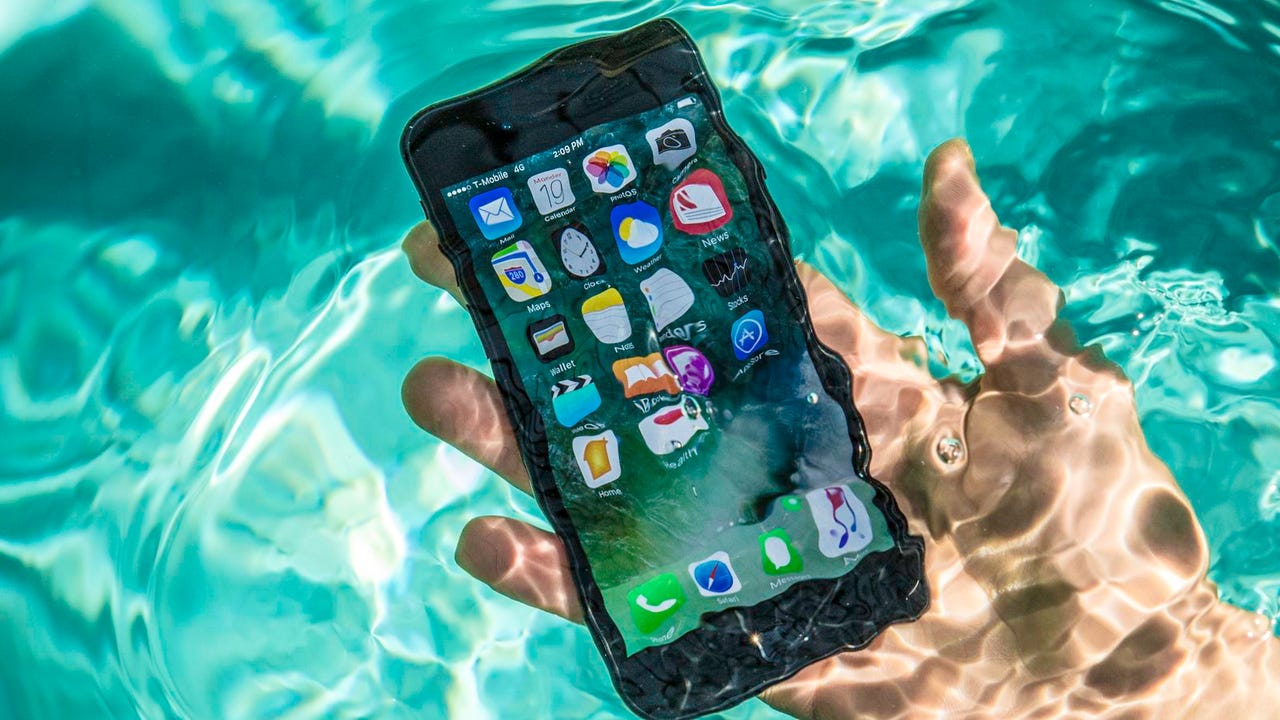































 CNET/CBS Interactive
CNET/CBS Interactive One of the most impressive features of some of the newer smartphones is their water resistance. They're kitted out with gaskets and seals that should let them live another day if you're to clumsily drop one into a puddleorin the toilet, or upend a carafe of water in its vicinity.
But what if you have an older smartphone that isn't waterproof? Of what if the waterproofing have been compromised because of age or damage (a cracked screen or a dent in the frame of the phone or tablet can allow water to seep past any seals of gaskets)?
Before we go any further, it's worth pointing out that there are no guarantees here. Your device might already be damaged beyond economical repair
You have seconds -- minutes at most -- to save the life of your smartphone or tablet. Here's what you need to do to give yourself the best chance of saving it.
Also:How to record a phone call on your iPhone
Materials needed:
Switch it off as fast as you can.
Back in the day, when smartphones had removable batteries, flipping the battery out was the quickest way to do that. Nowadays, you don't have that option, so you must use the power button.
Power it down
Don't assume that just because your device is still working that it can't be damaged. Water is nasty that way. By turning it off, you reduce the chance of your smartphone being permanently damaged by an electrical short circuit.
If the phone is already off, leave it off. Don't try powering it up or charging it or anything like that, until you've gone through the drying process.
Use whatever you have nearby to dry the outside of the device: Towel, paper towel, your t-shirt, etc.
Shake as much liquid out of the ports as you can.
The less water on the exterior of the device, the better.
Now comes the emergency drying.
The moisture-absorbing substance that many recommend is rice. Unfortunately, in my testing it's rubbish and the rice particles end up causing more problems. But rice is something that many people have handy, so if you have nothing else, use the rice while you get something better.
What's better than rice?
Here are some other common household things that are great moisture absorbers:
Silica gel packets
DampRid
There's not much finesse here... Just put the device in the bag with the moisture absorber, then seal the bag, and pop it into a warm (not hot -- you don't want to damage your smartphone or tablet) place.
Note: If you have a vacuum sealer in your kitchen (people use this a lot for sous-vide cooking), then this might give you an edge. Put the phone and your moisture-absorbing substance of choice in a vacuum bag and use the sealer to suck out the air. The partial vacuum will cause the water to evaporate a little quicker and help dry your device faster and more thoroughly.
If all you have is rice, then use the rice first while you head out to the store to findsilica gel or dehumidifying crystals . You can then swap out the rice for a better moisture-absorber and continue the drying from there.
If you like to be prepared for any aquatic mishaps, then you might want to consider buying a fewpre-made moisture-absorbing bags specially designed for electronics . They're only a few bucks and have a long shelf life.
Kensington Evap rescue pouch
Redux
Not soaking your device in the first place has a lot better success rate than trying to dry it out after the fact. Even acheap waterproof case or bag can save you hundreds of dollars and a lot of headaches and tears.
Kona Submariner Waterproof Case
Salt water is probably one of the worst things you can drop your smartphone into (cola is a close second). Not only is salt water incredibly conductive, which dramatically increases the likelihood of a damaging short-circuit, but it's also very corrosive, so even if your device survives the dip, corrosion damage might kill it a few weeks or months down the line.
The only guaranteed long-term way to recover a smartphone that's suffered salt water damage is to take it apart, then clean all the components using a solvent that's safe for circuit boards, and reassemble.
 Tags quentes :
Smartphones
Tags quentes :
Smartphones